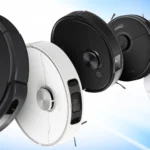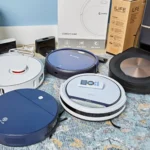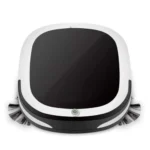As homeowners, we all want to keep our living spaces clean and tidy. One of the most important tools we use to achieve this is the trusty vacuum cleaner. However, with so many types of vacuum cleaners available on the market, choosing the right one for your home can be perplexing. Two popular types of vacuum cleaners are the wet and dry vacuum cleaner and the traditional vacuum cleaner. Each type has its pros and cons, making the decision of which to choose even more difficult. So, which is better for your home? Let’s explore the differences between wet and dry vacuum cleaners and traditional vacuum cleaners in terms of suction power, noise level, dust capacity, cleaning performance, filtration system, and cost.
What is a Wet and Dry Vacuum Cleaner
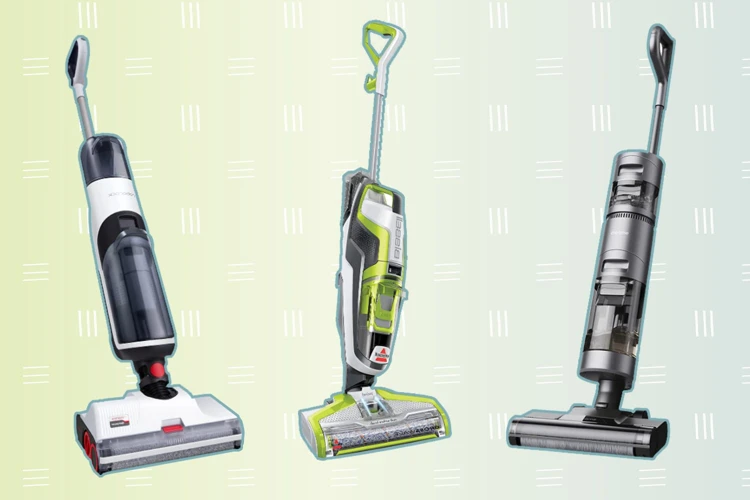
Have you ever dealt with both wet and dry spills on your flooring or carpet? It can be a challenge to clean them up effectively with just a traditional vacuum cleaner. This is where a wet and dry vacuum cleaner comes in handy. As the name suggests, it can clean both wet and dry messes, from spills to debris. If you’re considering investing in a wet and dry vacuum cleaner, it’s important to know how it works and its pros and cons. For more information on the benefits of wet and dry vacs, you can check out our benefits of wet and dry vacs article.
How it Works
Wet and dry vacuum cleaners work by combining the functionality of a traditional vacuum cleaner with that of a mop and bucket. They have a powerful motor allowing them to suck up dry debris, like dust or pet hair, along with wet spills or liquid messes.
The process for cleaning with a wet and dry vacuum cleaner:
| Step 1: | Plug in the vacuum cleaner. |
| Step 2: | Attach the appropriate nozzle for the cleaning job at hand. The crevice attachment is useful for tight spaces or corners, while the wider nozzle is ideal for larger areas. |
| Step 3: | Adjust the suction power to the desired level. |
| Step 4: | Start cleaning up the dry debris with the vacuum. |
| Step 5: | When ready to clean up wet messes, switch the vacuum to the appropriate setting or attach the wet nozzle provided. |
| Step 6: | Proceed to suction up the liquid. |
| Step 7: | Empty the dustbin and wash the filter after use to maintain the vacuum’s performance. |
It is important to note that not all wet and dry vacuum cleaners are created equal. There are a variety of options available on the market, and finding the right one for your home or workspace often requires some research. For more information on how to choose the best wet and dry vacuum cleaner, check out our buying guide. Additionally, to keep your wet and dry vacuum running efficiently, make sure to follow the maintenance tips outlined in our maintenance guide.
Pros and Cons
Pros and Cons of Wet and Dry Vacuum Cleaners
| Pros | Cons |
|---|---|
| Can clean wet messes and dry debris | May be more expensive than traditional vacuums |
| Often have larger dust capacity | Heavier and bulkier than traditional vacuums |
| Effective at removing pet hair and dander | May be louder due to stronger motor |
| Can be used on upholstery, carpets, and hard floors | Can be more difficult to maneuver in tight spaces |
| Some models have HEPA filtration systems for improved air quality | May require more maintenance to keep the filters clean |
Pros and Cons of Traditional Vacuum Cleaners
| Pros | Cons |
|---|---|
| Lighter, more compact, and easier to maneuver | May not be as effective at cleaning wet messes |
| Generally less expensive than wet and dry vacuums | Smaller dust capacity may require more frequent emptying |
| Can be ideal for homes or apartments with limited storage space | May not be as effective at removing pet hair and dander |
| Many models have HEPA filters for improved air quality | May not work as well on all types of surfaces |
| Can be more appropriate for light cleaning and quick pickups | May not have the same level of suction power as wet and dry vacuums |
As with any cleaning equipment, there are pros and cons to consider when deciding between wet and dry vacuum cleaners and traditional vacuum cleaners. Wet and dry vacuums are great for those who need to clean up wet messes as well as dry debris, but they can be bulkier and require more maintenance. Traditional vacuum cleaners, on the other hand, are generally lighter and more compact, making them easier to store and maneuver. They may not be as effective at cleaning up wet messes, however, and may be less effective at removing pet hair and dander. Ultimately, the choice between these two types of vacuums comes down to personal preference and cleaning needs.
What is a Traditional Vacuum Cleaner
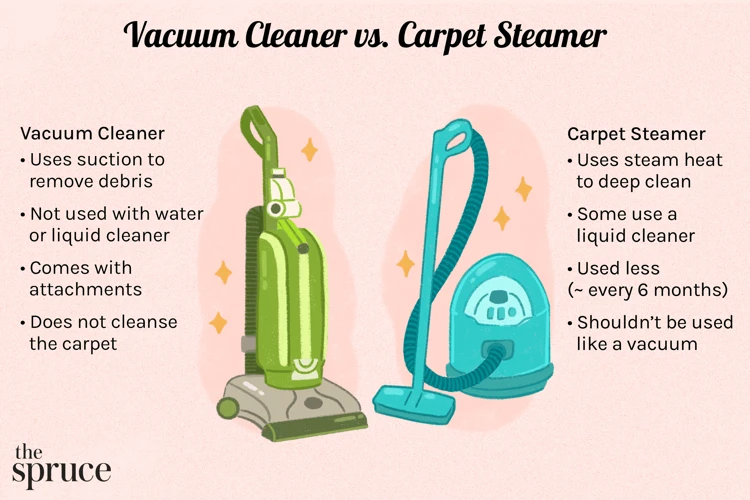
When it comes to cleaning your home or office, a traditional vacuum cleaner is often the first thing that comes to mind. These machines have been a staple in households for years and are designed to pick up dirt, dust and other debris from carpets, hardwood floors, and other surfaces. While they may seem similar to wet and dry vacuum cleaners, there are some key differences to keep in mind. In this section, we’ll take a closer look at traditional vacuum cleaners and how they operate. To learn more about wet and dry vacuums, click here.
How it Works
Wet and dry vacuum cleaners are designed to handle both wet and dry messes, hence their name. These types of vacuum cleaners work by using a powerful motor to create suction, which draws in air and any accompanying debris. The suctioned air and debris pass through the vacuum’s hose and into its collection canister.
Inlet Valve: A wet and dry vacuum cleaner is equipped with an inlet valve that regulates airflow. The valve can be adjusted to allow more or less air to enter the vacuum, which affects the suction power.
Motor: The motor in a wet and dry vacuum cleaner is designed to be more powerful than traditional vacuums. This allows it to generate greater suction power and handle more challenging cleaning jobs.
Collection Canister: A wet and dry vacuum cleaner has a collection canister that is used to store debris. These canisters have a larger capacity than traditional vacuums, allowing for extended cleaning without needing to be emptied.
Filtration System: Wet and dry vacuums have a specialized filtration system that prevents debris from clogging the motor. This is because wet messes can quickly damage a motor if not properly filtered.
In contrast, traditional vacuum cleaners work by using similar mechanics to that of a wet and dry vacuum cleaner, but are designed to only handle dry messes. They also have a motor that creates suction to draw in debris, but this debris then passes through a bag or filter. The bag or filter collects the debris, allowing for easy disposal.
Suction: Traditional vacuum cleaners have a slightly lower suction power than wet and dry vacuums due to their design. However, they can still effectively pick up small to medium-sized debris.
Bag or Filter: The bag or filter in a traditional vacuum cleaner is used to store debris. Once the bag or filter is full, it can be removed and replaced.
Wet and dry vacuum cleaners are great for more heavy-duty cleaning jobs, as they can handle wet and dry messes alike. Traditional vacuum cleaners are better suited for more day-to-day cleaning tasks.
Pros and Cons
When it comes to wet and dry vacuum cleaners, there are several pros and cons to consider before making a purchase. Here are the main ones:
Pros:
- Can handle wet and dry messes: This is the most obvious advantage of wet and dry vacuum cleaners over traditional vacuum cleaners. They can suck up both dry debris and liquid spills, making them a versatile choice for households with young children, pets or messy hobbies.
- Good for heavy-duty cleaning: Wet and dry vacuums often have a higher suction power, making them an excellent choice for heavy-duty cleaning tasks such as removing sawdust or debris from a workshop or garage.
- Easy to clean: Wet and dry vacuums come with detachable tanks that can be easily emptied and rinsed out, making them a low-maintenance option that saves time and effort.
- Multi-functional: In addition to its main function as a vacuum cleaner, some wet and dry models come with added features such as a blower function, which can be useful for outdoor cleaning tasks like removing leaves from the patio or blowing debris out of gutters.
Cons:
- More expensive: Wet and dry vacuums are often significantly more expensive than traditional vacuums due to their increased functionality and power.
- Heavier and bulkier: Due to their larger size and often sturdier build, wet and dry vacuum cleaners can be bulky and difficult to maneuver, especially if you need to carry it up and down the stairs.
- Louder: Wet and dry vacuums typically have a more powerful motor than traditional vacuums, which can make them louder and more disruptive to use.
- Shorter hose length: Some wet and dry vacuums may come with a shorter hose length, which can limit their reach and make it difficult to clean large spaces or tricky areas.
Wet and dry vacuum cleaners are a great option for those looking for a versatile and heavy-duty cleaning tool, but come with a higher price tag and larger size to consider. Traditional vacuum cleaners may not have the same level of functionality, but are generally more affordable and easier to maneuver.
Comparison between Wet and Dry Vacuum Cleaners and Traditional Vacuum Cleaners
Now that we have explored both wet and dry vacuum cleaners and traditional vacuum cleaners separately, it’s time to compare the two types. This comparison will help you decide which type of vacuum cleaner would be better suited for your needs. We’ll take a look at different factors like suction power, noise level, dust capacity, cleaning performance, filtration system, and cost, which are essential when choosing a vacuum cleaner. So, let’s dive into the comparison and find out which type of vacuum cleaner comes out on top.
Suction Power
Suction power is one of the most important factors to consider when choosing a vacuum cleaner. It determines how effectively the vacuum can clean various surfaces and how quickly it can pick up dirt and debris.
In terms of suction power, both wet and dry vacuum cleaners and traditional vacuum cleaners have their strengths and weaknesses. However, wet and dry vacuum cleaners tend to have more robust suction power than traditional vacuum cleaners, mainly because they are designed to handle tougher, wet messes.
Wet and Dry Vacuum Cleaners
Wet and dry vacuum cleaners are often used in industrial settings, where they are tasked with handling a wide range of messes. The suction power of these cleaners is measured in horsepower (HP) and can range from 2 HP to 6 HP.
The suction power of wet and dry vacuum cleaners is determined by factors such as motor power, airflow, and the size and design of the suction hose. These cleaners have powerful motors that can generate high levels of suction even when dealing with heavy debris or liquids. They also tend to have large, sturdy hoses that can accommodate larger debris particles without clogging.
Traditional Vacuum Cleaners
Traditional vacuum cleaners are designed primarily for use in households, where they are typically used to clean floors, carpets, and upholstery. The suction power of traditional vacuums is rated in watts (W) and can range from 300 watts to over 2000 watts.
While traditional vacuums tend to be less powerful than wet and dry vacuums, they can still provide sufficient suction power for most household cleaning needs. The suction power of these cleaners is determined by factors such as motor strength, the design of the vacuum head, and the type of filter used.
Comparison
In terms of suction power, wet and dry vacuum cleaners have a clear advantage over traditional vacuum cleaners. Their horsepower rating generally exceeds that of traditional vacuums, which means they can handle more challenging cleaning tasks with ease. Additionally, wet and dry vacuums tend to have larger, more robust hoses that can handle larger debris particles without clogging.
However, if you’re only using a vacuum cleaner for household cleaning, a wet and dry vacuum might be overkill. Traditional vacuum cleaners are generally more than capable of handling routine household cleaning tasks, and they tend to be more affordable than wet and dry vacuums.
Here’s a summary of the suction power comparison between wet and dry vacuum cleaners and traditional vacuum cleaners:
| Wet and Dry Vacuum Cleaners | Traditional Vacuum Cleaners | |
|---|---|---|
| Suction Rating | 2 HP to 6 HP | 300 W to over 2000 W |
| Strengths | Powerful motors and large hoses make them ideal for heavy-duty cleaning tasks | Great for routine household cleaning tasks |
| Weaknesses | Can be more expensive and less maneuverable than traditional vacuums | May struggle with tougher cleaning tasks, such as deep-cleaning carpets |
Ultimately, the suction power you need will depend on your cleaning needs. If you need a vacuum cleaner that can handle heavy-duty cleaning tasks or wet messes, a wet and dry vacuum cleaner is the way to go. If routine household cleaning is all you need, a traditional vacuum cleaner will suffice.
Noise Level
When it comes to the noise level, Wet and Dry Vacuum Cleaners and Traditional Vacuum Cleaners can have different levels of loudness. However, noise is something that a lot of people may not tolerate or like, especially if they have little children or pets in the house. It is important to keep in mind that noise levels are measured in decibels (dB).
In general, Wet and Dry Vacuum Cleaners tend to be a bit quieter than Traditional Vacuum Cleaners. This is because they are designed with more heavy-duty materials, which help to dampen the noise. Wet and Dry Vacuum Cleaners often have motors that are larger and more powerful than those found in Traditional Vacuum Cleaners. This allows the motor to run at a lower speed, which in turn reduces the noise level.
On the other hand, Traditional Vacuum Cleaners tend to be louder because they have smaller motors that run at a higher speed. This can cause the machine to produce more noise. It is also worth noting that bagless Traditional Vacuum Cleaners (those without a dustbin and filter) tend to be slightly louder than their bagged counterparts.
Table: Noise Level Comparison
| Type of Vacuum Cleaner | Noise Level (dB) |
|————————-|—————–|
| Wet and Dry Vacuum Cleaner | Below 80 dB |
| Traditional Vacuum Cleaner | Above 80 dB |
Wet and Dry Vacuum Cleaners tend to be quieter than Traditional Vacuum Cleaners due to various factors such as the design, materials used and motor size. If noise is a concern for you, it may be worth considering a Wet and Dry Vacuum Cleaner.
Dust Capacity
One important factor to consider when choosing between a wet and dry vacuum cleaner and a traditional vacuum cleaner is the dust capacity. This refers to the amount of dust and debris that the vacuum cleaner can hold before needing to be emptied.
Wet and Dry Vacuum Cleaner Dust Capacity:
- These vacuum cleaners typically have larger dust capacities than traditional vacuum cleaners, usually ranging between 10-20 litres.
- They are specifically designed to handle both wet and dry debris, making them ideal for cleaning up spills or wet messes without risking damage to the machine.
- However, it’s important to note that the dust capacity may decrease if liquid is being sucked up as well.
Traditional Vacuum Cleaner Dust Capacity:
- Traditional vacuum cleaners can have varying dust capacities depending on the model, but most average between 1-4 litres.
- This means that they may need to be emptied more frequently than a wet and dry vacuum cleaner, especially if you have a larger home or frequently vacuum high traffic areas.
- However, some traditional vacuum cleaners are designed with dustbins that are easy to remove and empty, making the process quick and hassle-free.
In general, if dust capacity is a top priority for you, a wet and dry vacuum cleaner may be the better choice. However, if you don’t mind emptying the dustbin more frequently, a traditional vacuum cleaner may work just fine for your needs. Ultimately, it’s important to consider your unique cleaning needs and choose a vacuum cleaner that will best suit them.
Cleaning Performance
When it comes to the cleaning performance of wet and dry vacuum cleaners versus traditional vacuum cleaners, there are a few things to consider. Here are some of the key points to keep in mind:
- Surface Type: Wet and dry vacuum cleaners are particularly effective at cleaning hard floors and carpets that may have spilled liquids or debris embedded in them. Traditional vacuum cleaners, on the other hand, are better suited to cleaning surfaces like carpets and rugs that may have trapped dirt and dust.
- Power: Wet and dry vacuum cleaners are often more powerful than traditional vacuum cleaners, which means they can clean more deeply and more thoroughly. However, this can also mean that they may be more difficult to maneuver or control, particularly for those who are not accustomed to using powerful cleaning tools.
- Special Features: Many wet and dry vacuum cleaners come with special features that can enhance their cleaning performance. For example, some models may include attachments for cleaning upholstery or crevices, or may have a detachable hose for reaching difficult areas. Traditional vacuum cleaners may have some of these features as well, but they may not be as versatile or effective.
Ultimately, the cleaning performance of wet and dry vacuum cleaners versus traditional vacuum cleaners depends on the specific needs and preferences of the user. For those who need to clean up spills or messes on hard floors or carpets, a wet and dry vacuum cleaner may be the better choice. For those who primarily need to clean carpets or other surfaces that accumulate dust and dirt, a traditional vacuum cleaner may suffice. It’s important to consider all of the factors outlined here, as well as other features such as suction power, filtration systems, and cost, in order to make the right decision for your home or business.
Filtration System
The filtration system of a vacuum cleaner is an essential component that needs to be considered when deciding between wet and dry vacuums and traditional vacuums. The filters are responsible for trapping and containing the dust, dirt, and other particles collected by the vacuum. A good filtration system ensures that the air released back into the room after vacuuming is clean and safe to breathe.
Wet and Dry Vacuum Cleaners: Wet and dry vacuum cleaners have a unique filtration system designed to handle both wet and dry cleaning. These vacuums usually come with two filters: a foam filter and a HEPA filter. The foam filter captures large dirt particles and prevents them from entering the motor, while the HEPA filter traps smaller particles, including allergens and bacteria. The HEPA filter is washable, which makes it easier to clean and maintain. This type of filtration system is ideal for people with allergies or respiratory issues.
Traditional Vacuum Cleaners: Traditional vacuum cleaners use a single filter to trap dirt and dust. The filter is usually made of paper or fabric and needs to be replaced regularly. A clogged filter can reduce the suction power of the vacuum and lead to poor cleaning performance. Some traditional vacuums use HEPA filters, but they are less common than in wet and dry vacuums.
When it comes to the filtration system, wet and dry vacuums have a more advanced system that offers superior performance and convenience for people who suffer from allergies or respiratory issues. Traditional vacuums offer a much simpler filtration system and may require frequent filter replacements to maintain optimal performance.
Cost
When it comes to cost, both wet and dry vacuum cleaners and traditional vacuum cleaners come with various price tags. The cost usually depends on the brand, model, and features offered.
Wet and dry vacuum cleaners:
- Generally, wet and dry vacuum cleaners tend to be more expensive than traditional vacuum cleaners due to their added versatility.
- The price of a wet and dry vacuum cleaner can range from $50 to $500 or more, depending on the features and specifications offered.
- High-end wet and dry vacuum cleaners come with advanced features such as HEPA filters and larger dust capacities which make them cost more than their traditional counterparts.
Traditional vacuum cleaners:
- Traditional vacuum cleaners can be found in various price ranges to suit different budgets.
- The price of a traditional vacuum cleaner generally ranges from $30 to $500 or more depending on the brand, model, and features.
- High-end traditional vacuum cleaners come with advanced features such as a powerful suction motor and HEPA filters, which increase the price.
The cost of a vacuum cleaner is determined by the features it offers. It is important to note that it’s not always the case that the most expensive vacuum cleaner is the best. It is essential to consider your budget and vacuuming needs before making a purchase decision.
Conclusion
After comparing the wet and dry vacuum cleaners to traditional vacuum cleaners, it is difficult to pick a clear winner. Both types of vacuum cleaners have their benefits and limitations. It ultimately comes down to your specific cleaning requirements.
If you are dealing with spills and wet messes on a regular basis, a wet and dry vacuum cleaner is a no brainer. It offers the capacity to handle wet spills and keep your floors clean and dry. However, if you prefer a vacuum cleaner that is more lightweight and easier to maneuver, a traditional vacuum cleaner may be more suitable for you.
When it comes to suction power, both types of vacuum cleaners are designed to clean floors, but a wet and dry vacuum cleaner can handle thicker, more liquid debris. On the other hand, a traditional vacuum cleaner may be more powerful if you want to pull stubborn pet hair and dust from carpets and upholstery.
You should consider the noise level of a vacuum cleaner when purchasing. Traditional vacuum cleaners can be quite noisy, especially when running at high power, while wet and dry vacuum cleaners tend to be quieter. In general, lower noise levels are preferable, especially if you have young children at home or share an apartment with others.
Both the wet and dry vacuum cleaner and traditional vacuum cleaner offer different amounts of dust capacity. A traditional vacuum cleaner may require frequent bag or filter changes, while a wet and dry vacuum cleaner can handle liquid spills and large debris without becoming clogged.
Cleaning performance is a critical factor to consider when choosing a vacuum cleaner. A wet and dry vacuum cleaner can handle both liquid spills and dry debris, while a traditional vacuum cleaner is best suited for removing dust, pet hair, and other dry debris from carpets and upholstery.
When it comes to filtration, wet and dry vacuum cleaners are designed with HEPA filters that can trap smaller particles and allergens, making them a better choice for those who suffer from allergies or respiratory problems. Traditional vacuum cleaners may also come with HEPA filters, but most models require regular cleaning and maintenance to keep them functioning correctly.
Finally, the cost may be an issue for many consumers. Wet and dry vacuum cleaners are typically more expensive than traditional vacuum cleaners, but they offer the added convenience of handling both wet and dry messes. Traditional vacuum cleaners may be cheaper but may require additional costs for bags or filters.
In conclusion, both the wet and dry vacuum cleaner and traditional vacuum cleaner have their benefits and limitations. It ultimately comes down to the features that are most important to you, such as suction power, noise level, dust capacity, cleaning performance, filtration system, and cost, when choosing the right vacuum cleaner for your needs.
Frequently Asked Questions
Can I use a wet and dry vacuum cleaner on carpets?
Yes, you can use a wet and dry vacuum cleaner on carpets. However, it may not be as effective as a traditional vacuum cleaner specifically designed for carpet cleaning.
Can I use a traditional vacuum cleaner to pick up liquids?
No, you cannot use a traditional vacuum cleaner to pick up liquids. It is not designed for wet vacuuming and can be dangerous if attempted.
Do wet and dry vacuum cleaners require any special maintenance?
Yes, wet and dry vacuum cleaners require regular cleaning of their filters and hoses to prevent mold and bacteria buildup. It is also important to empty the water tank after each use.
How loud are wet and dry vacuum cleaners?
Wet and dry vacuum cleaners can be quite loud, depending on the model. Some can generate noise levels up to 85 decibels, which is equivalent to a blender or lawnmower.
Which type of vacuum cleaner is better for pet hair?
A traditional vacuum cleaner with a high-quality pet hair tool attachment is generally more effective at picking up pet hair than a wet and dry vacuum cleaner.
Can I use a wet and dry vacuum cleaner to clean my car?
Yes, a wet and dry vacuum cleaner can be used to clean car interiors, including carpets and seats. However, it is important to use the appropriate attachment for each surface.
How important is the filtration system in a vacuum cleaner?
The filtration system in a vacuum cleaner is crucial for maintaining good indoor air quality. A high-quality filtration system can trap allergens and other contaminants, making the air in your home cleaner and healthier.
Are wet and dry vacuum cleaners more expensive than traditional vacuum cleaners?
Wet and dry vacuum cleaners tend to be more expensive than traditional vacuum cleaners due to their additional functions and features. However, the cost can vary depending on the brand and model.
Can I use a wet and dry vacuum cleaner to unclog my sink?
No, a wet and dry vacuum cleaner is not designed for unclogging sinks. Attempting to do so can damage the vacuum cleaner.
Which type of vacuum cleaner is better for a workshop or garage?
A wet and dry vacuum cleaner is typically a better choice for a workshop or garage, as it can pick up both wet and dry debris. It is also more durable and easier to clean than a traditional vacuum cleaner.


